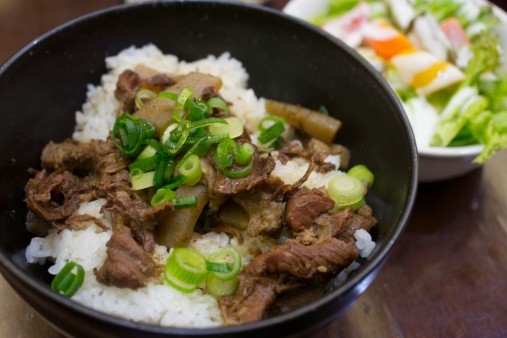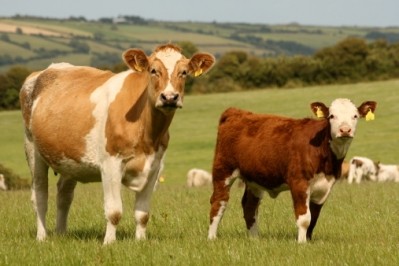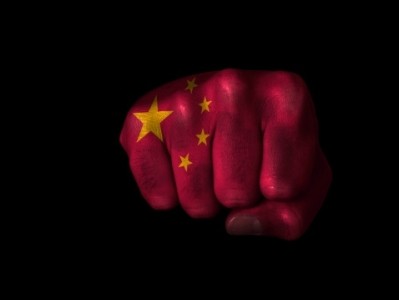Middlemen take profits as Brazil, Ireland eye opening of China beef market

"Imports last year went mainstream," says Haggard, explaining how large boxes of frozen Australian beef oxtails are now being shipped far inland to cities like Wuhan and Chengdu to supply a roaring restaurant trade.
Though farmgate prices for domestic cattle are higher in China, middlemen have been keen to capitalise on the prestige enjoyed by imported products, with prices for Australian ribeye averaging RMB85/500g versus domestic at RMB65/500g at Beijing wet markets.
While duty of 12% and VAT at 13% contributes to the cost of imports, there is clearly much profit being made by distributors and other vendors, agrees Haggard.
With a Chinese veterinary delegation currently in Brazil, the latter expects a reopening of the China market with a few months, says Andrea Bertolini, agricultural attaché at the Brazilian embassy in Beijing. "The demand in China is real and we have a competitive product," she explained, speaking at a seminar at the Foreign Correspondents Club in Beijing organised by this writer.
Clearly there is a market, given that 24% of Brazil’s beef exports currently head to Hong Kong, often used as a hub for the grey trade into mainland China. There are no "proven reasons" for any continued sanctions on Brazilian beef entering China, said Bertolini.
Likewise, Ireland’s newly appointed agricultural attaché in Beijing says he is hopeful that Irish beef exports will enter China from this year. Colm O’Cribin believes China’s ban on EU beef on BSE grounds, while no longer justifiable, may be in part due to fears on the Chinese side of "any remote chance of BSE entering the country", a fear which O’Cribin believes is related to the extreme caution among China’s food safety officials in the wake of the melamine milk safety scare of 2008, which caused deaths and led to dismissals, jailings and even execution of officials and vendors.
The US, meanwhile, has presented China with a World Organisation for Animal Health (OIE) ranking, which puts the country on a par with Australia in terms of safety. While US beef prices are currently high ("bottom of the cycle" explains Haggard) the country still stands to corner a significant market share in China, believes Haggard.
This is because the country is able to supply the kind of volumes required by a fast-growing catering sector. Rapidly expanding restaurant chains, in particular, will be drawn to the volume and reliability of supply guaranteed by major American beef producers, believes Haggard.
He points to the Japanese fast-food chain Yoshinoya (which is also active in China) famed for its rice-beef-veg meals. "All Yoshinoya’s outlets in Tokyo use US belly beef and the volumes involved are massive." With regionally-focused restaurant chains, in particular, expanding at a rapid pace, the Chinese hotel and restaurant market could prove particularly receptive to US grain-fed beef, Haggard believes. "Grass-fed is cheaper, it’s used mostly for stews or braising and ‘wet’ cooking. Grain-fed beef is used in China for ‘dry’ cooking, such as steaks, Korean BBQs and hot pots."
Ultimately China may be forced to widen its sources for imported beef, given strong growth in consumption here, allied to a looming supply crunch in its top supplier, Australia. Chinese experts have conceded that total beef imports could be over one million tons, twice the official imports figure, due to rampant smuggling.
Any smuggling trade into the mainland from Hong Kong is not condoned by suppliers, says Haggard, who points out that US port authorities do not approve any shipments whose stated destination is mainland China.
Australia, which accounted for about half of China’s official imports last year, is facing a slump in output, due to a drought which has forced a cull of cows. Meanwhile, the herd in rival exporter, the US, is also at its smallest in six decades.
Best-placed, perhaps, to fill the gap: Indian beef, which remains the cheapest option for China beef importers. That’s judging by pricing data for Indian shipments into Vietnam (which unlike China remains open to Indian exports, but which has also been a transit point for beef and seafood exports/smuggling into China.
While Indian beef is not allowed into mainland China at the moment, officials from Beijing and Delhi in May 2013 signed a memorandum of understanding which is set to ultimately allow imports – a deal seen by many as a concession to Indian complaints about its trade deficit with China.
Data from the US Meat Exporters Federation shows Indian beef selling at US$3,200-$3,600 per tonne in Hanoi, versus an average US$4,528 per tonne for Australian beef shipped to China and an average US$4,404 per tonne paid for Brazilian beef in China in 2012, when that country’s beef still had access to mainland China.
Countries with approval to ship to China are: Australia, Argentina, Canada, Costa Rica, New Zealand and Uruguay (the country with the longest access, following a 1997 protocol). Australia has arguably the best access, with 33 plants licensed to ship to China, compared to eight Canadian plans and 18 Argentinian processing plants.
















